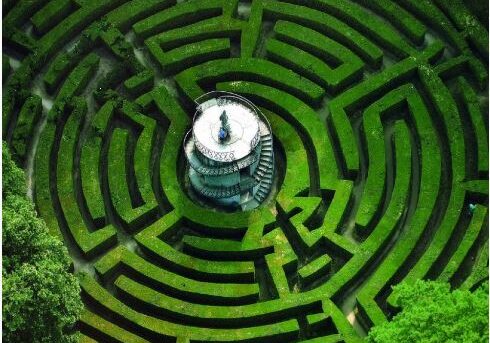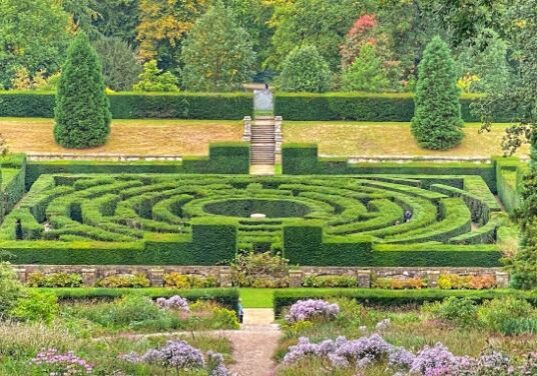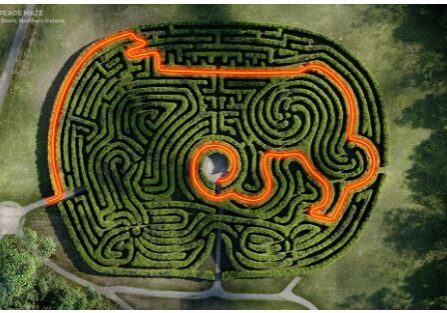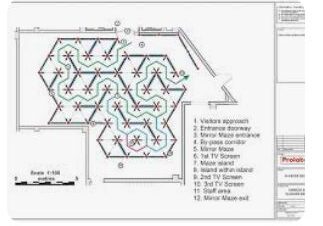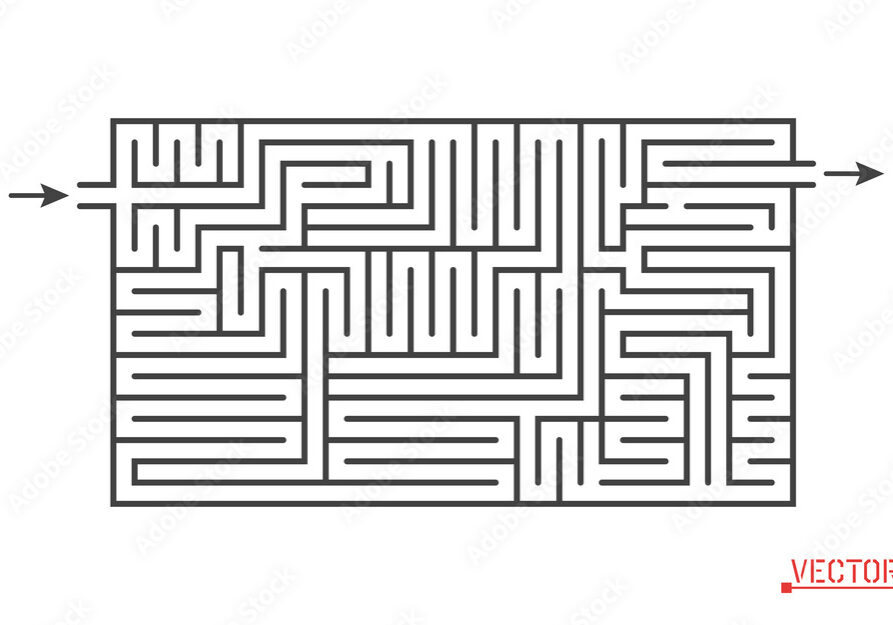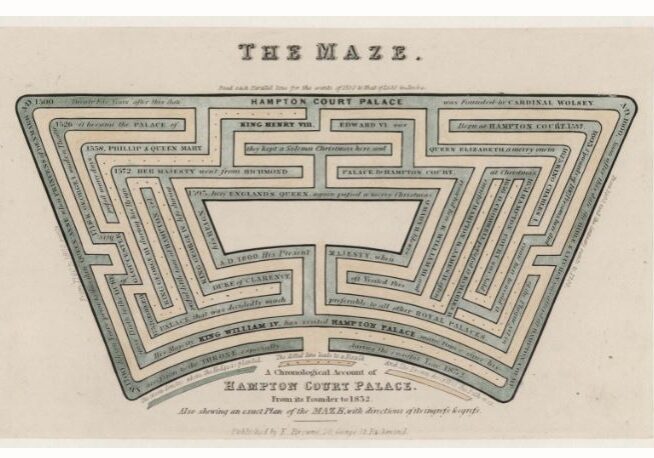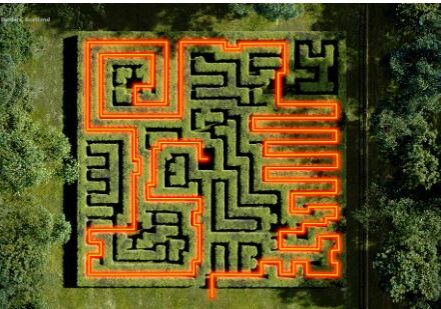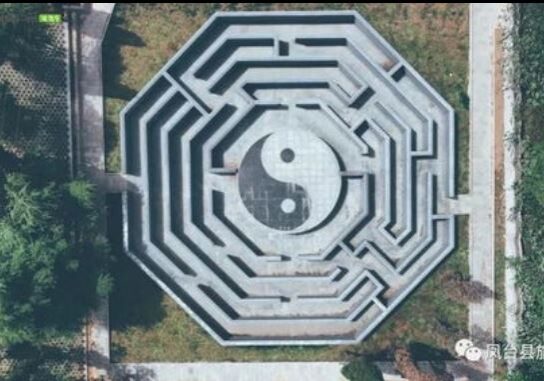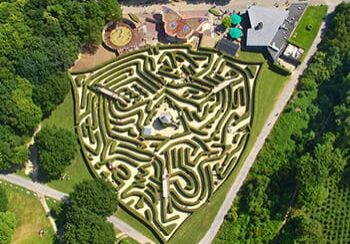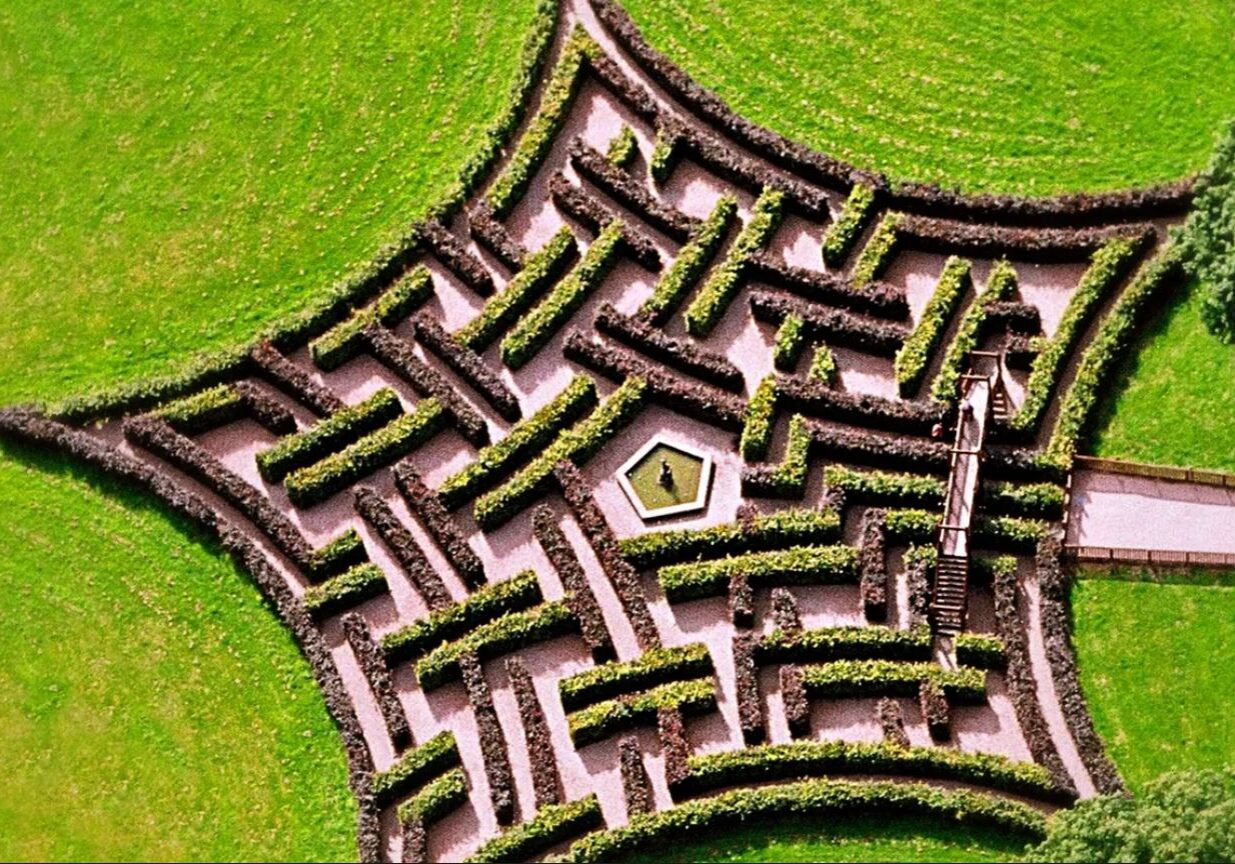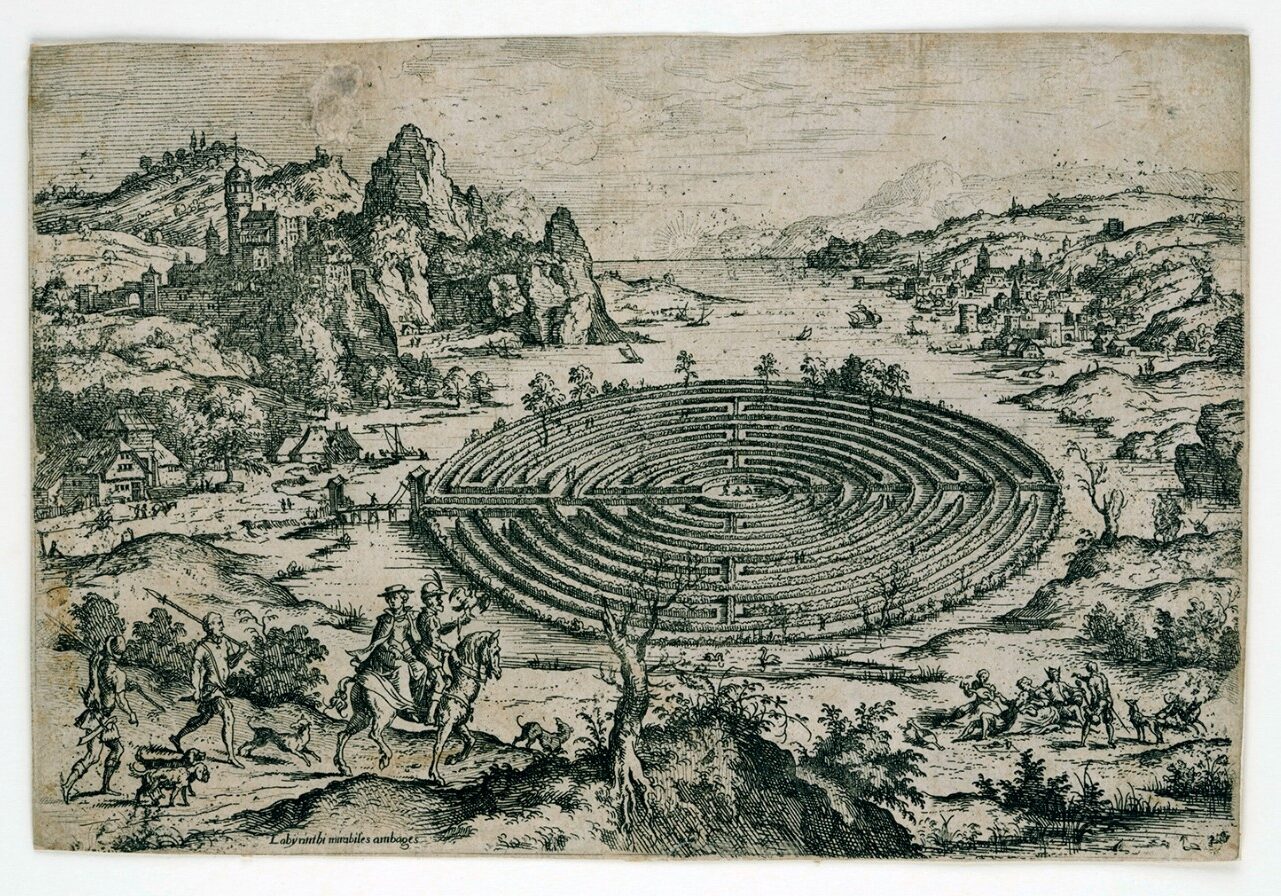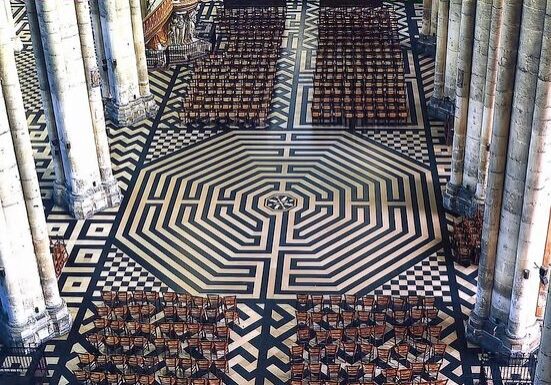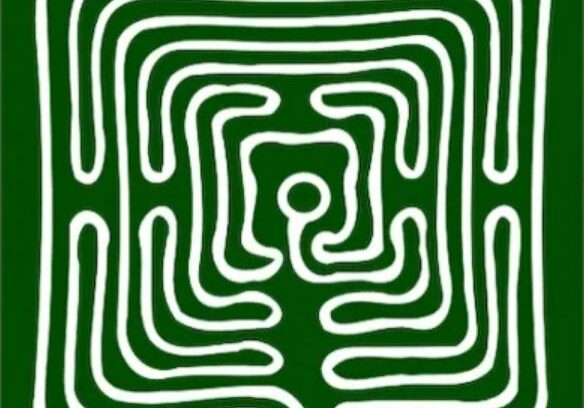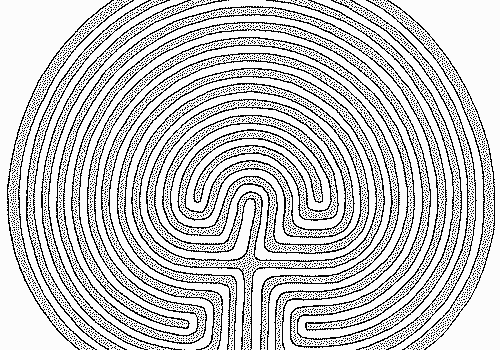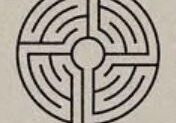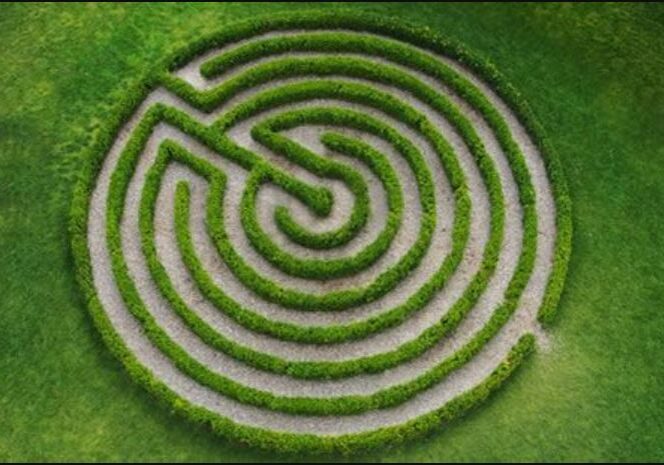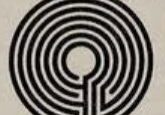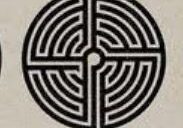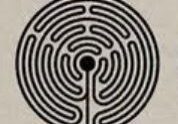
Guinness world records
The Alberta Botanic Garden is home to the largest permanent tree maze in the world, spanning an incredible 640 hectares. With over 50 kilometers of winding paths, it can take up to 10 hours to walk your way out—so if you manage to do it, congratulations! You’re one of the lucky ones.
The maze features 40 hidden goals, each located at varying distances from the starting point. But don’t expect to stumble upon them by chance—they're tucked away deep in the woods. To help you on your journey, you'll use a Pathfinder—a guided quiz filled with questions that lead you through the maze. It not only makes the experience more enjoyable but also helps you choose the path and distance that best suits your adventure. Prefer a shorter visit? Simply select one of the closer destinations.
During the autumn and winter seasons, the maze undergoes careful maintenance. With 50 kilometers of hedges to trim, new trees to plant, and large trees to prune or remove, we ensure sunlight and water reach every part of the living labyrinth.
We also use this time to create new and exciting challenges, so each visit offers something fresh and engaging. At the Alberta Botanic Garden, the maze is more than a walk—it's an ever-evolving journey worth exploring again and again.
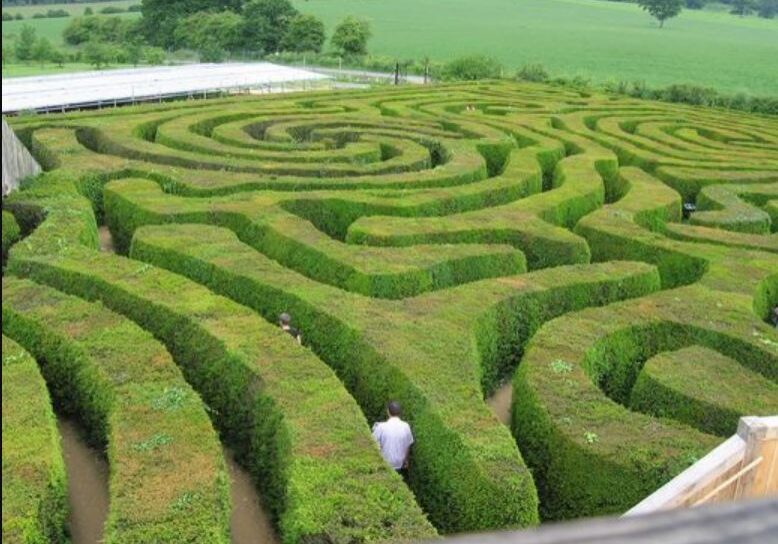
Mazes is a great game designed for people to play and have fun by finding a way out. The path of a maze is fixed. There is a type of maze that uses multiple portals to connect multiple paths so that people need to make choices among multiple portals.
The maze in a park is usually composed of multiple walls and rooms, with hedges, grass, and stones of various colors, and sometimes even with corn all over the mountains. The scenery is beautiful, which is to attract tourists.
Mazes can also be drawn with paper and pen, and people draw the path with a pencil to find the way out.
Finding a way out
Mathematician Euler was the first person to use plane analysis methods to find a way out of a maze, and this study is called topology.
The following algorithm is for challengers who do not know the design of the maze to find a way out when they are in the maze.
Traversal using the right-hand rule
The right-hand rule, or the left-hand rule, is the most famous maze algorithm. If the walls of the maze are simply connected, in other words, all the walls are connected, then as long as you hold one of the walls with one hand and then move forward, you will definitely not get lost and you will find the exit. Otherwise, you will have a chance to return to the starting point. However, if the maze is not simply connected, this method may not be able to find the exit of the maze. The right-hand rule can also solve mazes in three or higher dimensions.
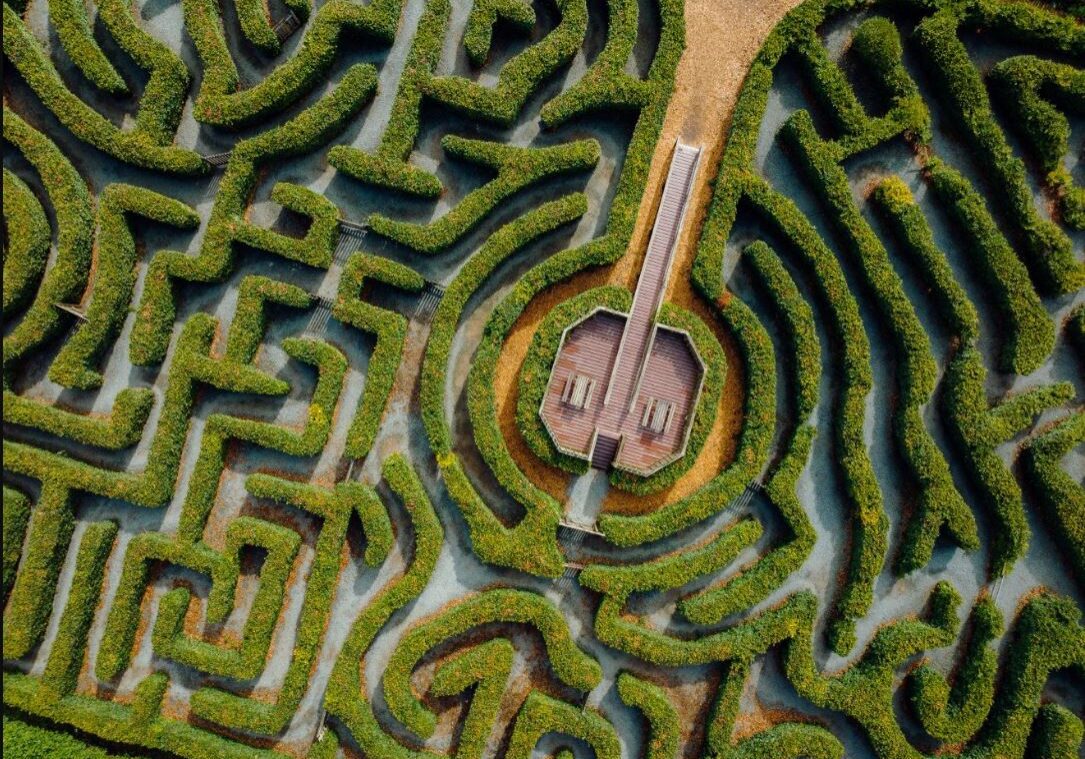
oUR MAZES
We have over 15 different mazes to choose from and enjoy the adventure of traveling through each unique and fascinating maze. You'll also get to learn the history behind each individual maze and its purpose. Making your experience even more fascinating and interesting.
What the difference between a Maze and A labyrinth?
The difference between mazes and labyrinths is that labyrinths have a single continuous path which leads to the centre, and as long as you keep going forward, you will get there eventually. Mazes have multiple paths which branch off and will not necessarily lead to the centre.
A Maze, with repeatedly dividing paths, forcing the traveler to choose among options, some of which may be dead ends, while others double back on themselves, so that the traveler has no assurance of ever reaching the goal and is constantly faced with decisions and frustrations, but also may experience the relief and surprise of having made the right choices leading to the goal; or
A Labyrinth also called (a Meander,) with a single, undivided path and no choices to make other than traveling onward through the winding pattern to an assured goal. The meandering pattern may tease the traveler by leading now inward, then suddenly outward, but eventually it arrives surely at the goal.

History of Labyrinths
The labyrinth pattern had no particular start that we know of. It is an archetype in the human mind. Labyrinth patterns are universal, being found as archaic petroglyphs, Amerindian basket-weaving designs, and paintings or drawings from all over the world. The earliest reported labyrinth was a two-story stone building in Egypt, described by the Greek historian Herodotus, but the name comes from the Cretan structure in the myth of Ariadne, Theseus, and the Minotaur, a pattern that also appears on ancient Cretan coins. In the Christian Middle Ages, labyrinths were often formed with colored paving stones in the floors of cathedral naves, especially on the Continent. Later, labyrinths were sometimes constructed of turf, herbaceous borders, or hedges--frequently in maze patterns and especially in England.
Labyrinths have been found in many parts of the world, including Greece, Spain, and medieval Europe
The ancient Greeks and Romans used labyrinths in buildings, often underground
Labyrinths were also featured in formal gardens during the European Renaissance
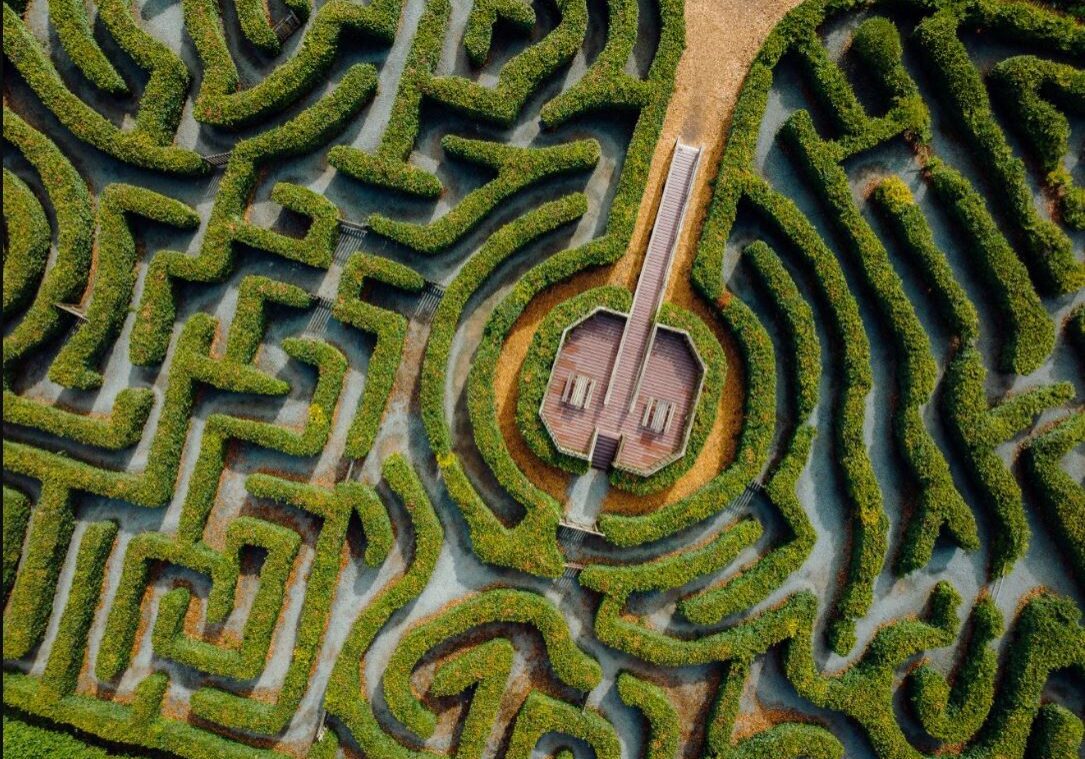

Purpose of Labyrinths
Labyrinths are used for walking meditation
They can help calm anxiety, reduce stress, and enhance creativity
Labyrinths can also represent wholeness and the journey of returning to the world after reaching the center
Some labyrinths are chiefly for entertainment (especially mazes with their challenge to the ingenuity of the traveler to discover the successful path leading to the goal). Such playful labyrinths are often provided with surprises along the path, fountains or obstacles to be overcome. Other labyrinths are artistic because of the elaborately beautiful patterns they make. Contemporary maze labyrinths are sometimes formed so that their paths and borders outline a picture visible only if looked at from high above.
In the Middle Ages, walking a cathedral labyrinth was a substitute for going on a pilgrimage to Jerusalem. Not everyone could make the long and arduous journey to the Holy Land, so walking a labyrinth in a church was a devotional activity. Today meandering labyrinths are often used as walking meditations, to focus the mind and put the walker in tune with the greater reality metaphorically represented by the labyrinth.
All labyrinths are symbolic, some richly so, such as the Cretan labyrinth, which is connected with a complex of myth, symbol, and allegory. At the heart of the labyrinth waits the Minotaur, half human and half bull. Through its winding passageways, the hero Theseus advances toward the center, guided by the inspiration of the priestess-princess Ariadne. The myth of the labyrinth is the story of these three characters.

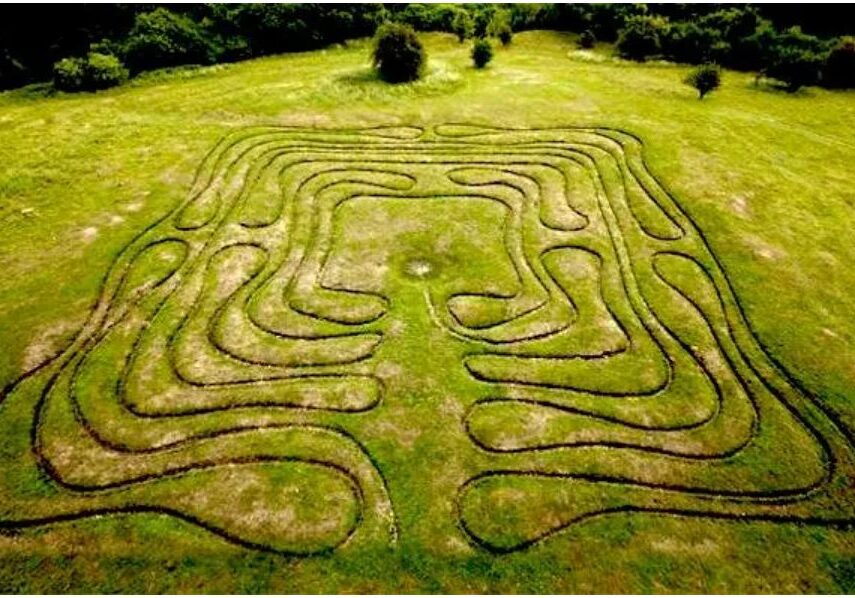
Health Benefits of Labyrinth walking
Ancient practices
Labyrinth walking is an ancient practice used by many faiths for spiritual centering, contemplation, and prayer. Entering the serpentine path of a labyrinth, you stroll while quieting your mind and focusing on a spiritual question or prayer.
The labyrinth meaning symbolizes a journey to a predetermined destination (such as a pilgrimage to a holy site) or the journey through life from birth to spiritual awakening to death. Labyrinths can be made of stone, wood, plants (such as hedges), or other materials. They may even be painted on a floor.
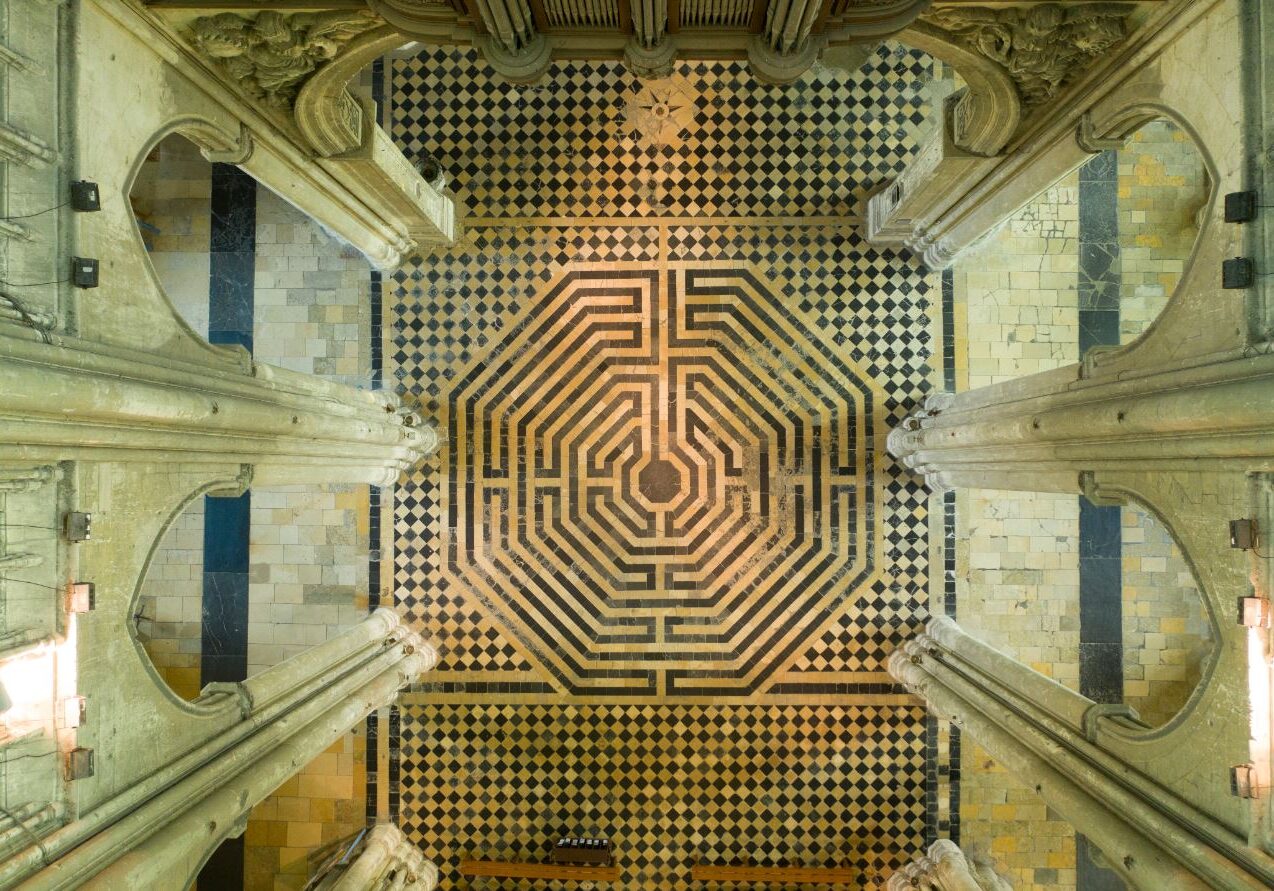
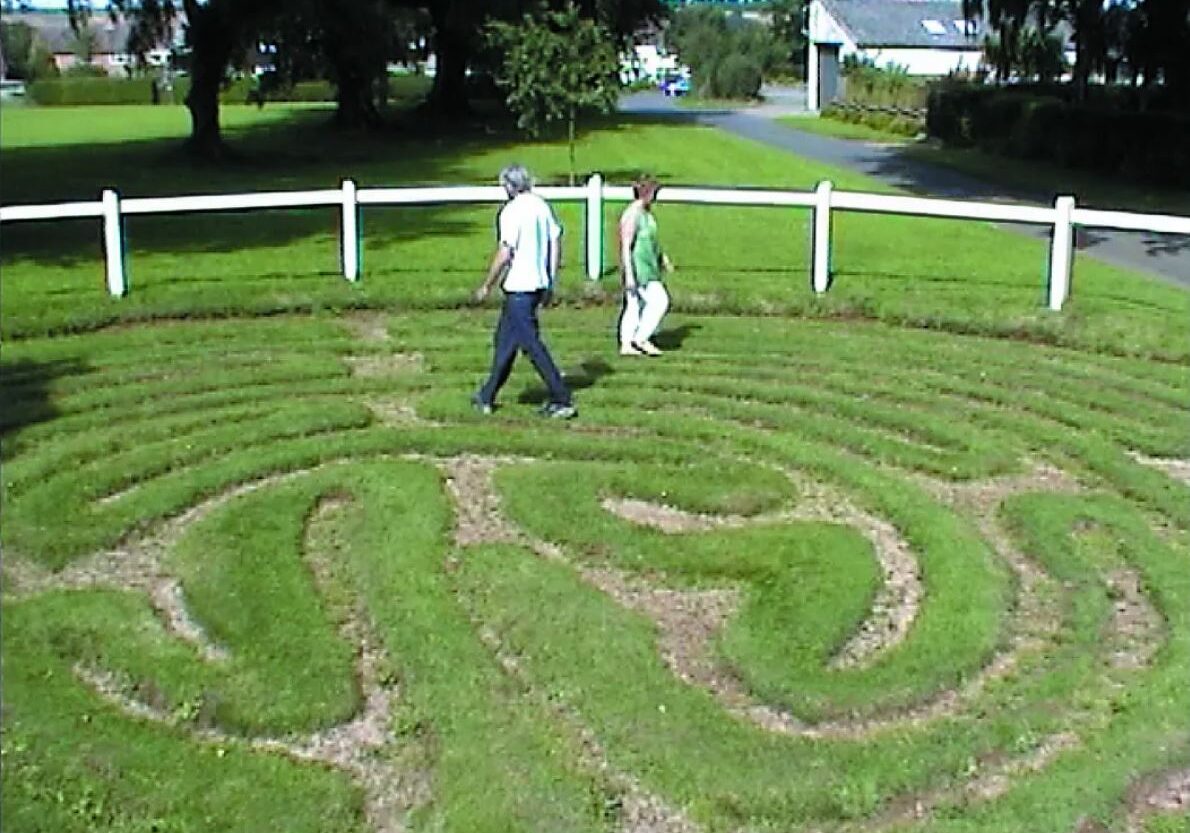
How Do I walk the labyrinth?
The labyrinth at Olcott, the national center of the Theosophical Society in America, is a meandering pattern of the seven-circuit Cretan type, with its path marked by circular stepping stones in a field of pebbles. It can be taken as typical of any labyrinth, because the technique of walking a meander is basically the same, whatever the particular pattern.
You walk the Olcott labyrinth by entering from the northwest, where the stepping-stone path begins. You follow the path to the center, where you may wish to pause for a few moments. Then you reverse your direction and retrace your path back out to the starting point. In walking any labyrinth, you should always complete the pattern by following the path both inward and outward, rather than cutting across the pattern at any point. The inward movement needs to be complemented by a corresponding outward return.
If several persons walk a labyrinth together, they may pass one another, going in either the same direction or opposite to each other. They may pass in meditative silence or quietly salute each other by a nod of the head or a raising of the hands. The effect of meeting fellow pilgrims on the path is part of the labyrinthine experience. The labyrinth is a joyfully sacred space. You do not need to be somber around it, but if someone is walking the labyrinth, it is courteous to respect the need they may have for quiet concentration.
As you enter the labyrinth, you may focus your thoughts on a question or concern. You may walk the labyrinth with a quiet mind, sensing without particularizing the wonder of the pattern. Or you may walk it with some of its many symbolic meanings held in your mind as seed thoughts. In the labyrinth, as in life, there is no single right way to follow the path.
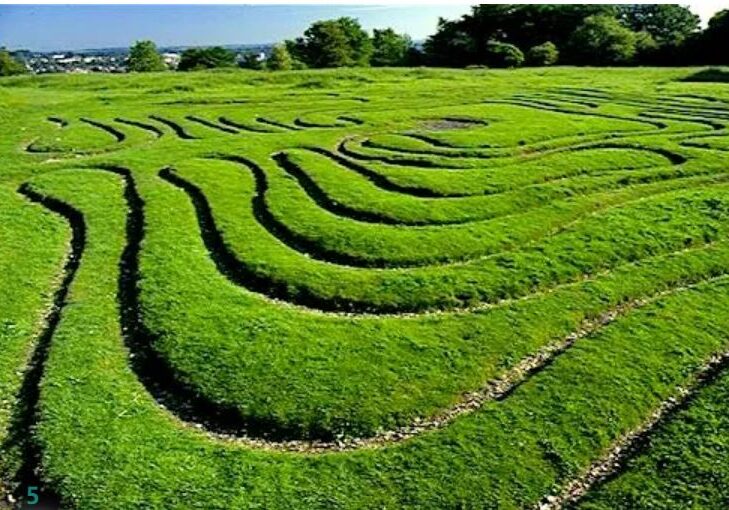
oUR labyrinths
We have over 12 different Labyrinths to choose from and enjoy the adventure of traveling through each unique and fascinating Labyrinth. You'll also get to learn the history behind each individual Labyrinth and its purpose. Making your experience even more fascinating and interesting.

